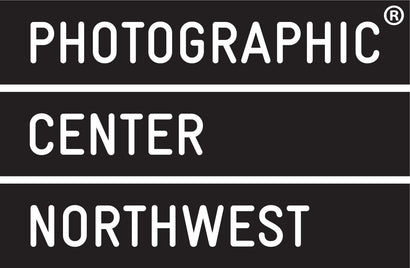Your Cart is Empty
Sold out
*WAIT-LIST* - Studio Lighting Basics - Fall 2025
$0.00 - $905.00
- COURSE IS FULL - To be added to the wait-list, click register and proceed through check-out. You will be asked to provide contact/billing information but will not be required to enter any payment information.
| FACULTY | Kate Hailey |
| DAY / TIME | Monday 6-9pm | September 29 - December 1, 2025 |
| TUITION | $870 + $35 Materials Fee |
|
Payment & Refund Policy Scholarship Opportunities |
|
| FORMAT | In-person, enrollment is limited to 12 students. |
| LEVEL | Intermediate |
| PREREQS | Photography I (B&W or Digital); knowledge of basic digital editing helpful |
| CREDITS | 3 – Fulfills Studio Lighting Basics requirement for Certificate Program |
This course will introduce students to the core concepts of lighting, beginning with an exploration of continuous light (window light, hot lights and daylight-balanced sources). The class will then learn about the art of using fill cards, color temperature, catch lights, and light patterns for portraits (such as Rembrandt light). Finally, take this knowledge and transition to the studio to study the use of strobes, modifiers, the flash meter, colored gels, backdrops and good studio practices. Learn how to apply these techniques to light still life, portraits, and other subjects.
Studio Lighting Basics is designed for students who have a great understanding of using their cameras in manual mode, how aperture, shutter speed, ISO, and white balance work, as well as how to change them on their cameras as taught through the prerequisite Photography I courses. Students can use digital or film cameras, but if using film please keep in mind the necessary post-processing time when doing the assignments.
COURSE OBJECTIVES
- Explore types and qualities of light
- How to shape light for different effects
- How to build simple & complex lighting setups
- Practical use and understanding of the latest gear from small, but powerful constant lights, to speedlights and traditional studio strobes
- Studio and set safety, setting up equipment
- Image workflow including tethering and editing
COURSE OUTCOMES
- Understand key lighting principles and terminology
- Gain confidence working with single and multi-light setups
- Be able to control and shape light to create mood, texture, dimension, and story
- Develop skills using constant and flash lighting tools across a variety of brands and formats
- Complete a final lighting-based project that showcases technical growth and creative voice
COURSE EQUIPMENT AND MATERIALS
Below is a general outline of the types of equipment and materials students will be required to provide to complete assignments for the class; complete details and resources will be shared during the first class meeting.
- Camera - Digital or Film with Hot Shoe; if you are a film shooter and don’t have a hot shoe, Kate has workarounds for the sessions with flash
- Lens - Any lenses will work, however something in the 18-55, 24 - 120 range for zoom, or 20mm, 35mm for still life, 50mm or 85mm for portrait
- Optional - At least one session will include on/off camera flash, if you have one, you could bring it to this session
IMPORTANT NOTES FOR STUDENTS
- Weekly attendance is vital to student success in PCNW courses. We require that students attend the first meeting in order to retain their spot in the class. A waiver may be granted if permission is given by, and subsequent arrangements made with, both the PCNW Registrar and Faculty. Please see our Education Policies for details about attendance policies and academic expectations.
- PCNW adheres to a strict payment, cancellation and refund policy. Please review our Payment & Refund Policies prior to registration.
- Intermediate and advanced courses have prerequisites which students must satisfy prior to enrollment. Prerequisites may be waived based on experience or prior courses taken through other institutions. To verify that you meet the prerequisite(s) for a course, contact Jennifer Brendicke, Registrar at jbrendicke@pcnw.org.
- Students are required to provide their own camera, unless otherwise noted in the course description. If you have questions about camera equipment or resources, contact us at pcnw@pcnw.org.
- The Materials Fee for the course includes costs associated with in-class demonstrations and use of studio equipment and materials such as backdrops, gels and other modifiers.
- Additional materials and supplies, not covered by a materials fee for a course, are the responsibility of the student. Students may need to rent or purchase additional equipment based on personal preference and projects, but primary lighting equipment and accessories are included with studio rental at PCNW (see Facilities section below) for completion of assignments outside of class. Detailed information about course expectations, required texts and materials will be provided at the start of the quarter.
- Students should prepare to spend several hours per week completing assignments outside of class, which may require use of the PCNW facilities; view our Rental Rates for details about additional fees. Rental fees for use of PCNW Facilities are a separate cost from tuition.
Image © Lilly Everett, PCNW Staff

